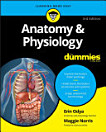Zinc in Soil-Plant Continuum
За е-книгава
Plants have evolved intricate systems of transporters and regulatory mechanisms to obtain trace amounts of zinc, which is crucial for their growth and yield. Zinc homeostasis is essential for optimal crop performance, yet its availability in the environment varies significantly. While some regions of the world experience severe zinc deficiency, others face zinc toxicity. This poses a dual challenge: zinc deficiency in crops negatively impacts the nutrition of millions of people dependent on plant-based diets, while zinc toxicity can lead to excessive zinc accumulation in crops, posing health risks to humans. The book highlights significant advancements in improving zinc nutrition in crops, presenting cutting-edge research and strategies to address these challenges. It offers insights into the broader implications of zinc in agriculture and human nutrition, bridging the gap between plant health and public health.
This book is an invaluable resource for undergraduate and postgraduate students, researchers, and academicians. It is particularly relevant for those studying or working in the fields of crop nutrition, essential elements in plants, zinc deficiency and toxicity in soils, the role of zinc in human health, and sustainable agricultural practices.
За авторот
Dr. Sudhakar Srivastava is presently working as an Assistant Professor at the Institute of Environment and Sustainable Development (IESD), Banaras Hindu University (BHU). He completed his M.Sc. and Ph.D. in Botany at the University of Lucknow. He also served as a Scientific Officer at Bhabha Atomic Research Centre (BARC), Mumbai from 2009 to 2014. He has more than nineteen years of research experience in the field of plant-metal interactions, with a major focus on stress responses in plants. He has published around 125 research articles, 50 review and letter articles in high-impact international and national journals and 6 books. He has also received several awards for his contributions, including a Young Scientist Award from the National Academy of Sciences, India (NASI), Allahabad in 2011, Young Scientist Award from Uttar Pradesh Council of Science & Technology (UPCST) in 2013-2014, and Young Scientist Award from the Science and Engineering Research Board (SERB) in 2015. Dr. Srivastava is also an Associate of the National Academy of Agricultural Sciences (NAAS) and a life member of several societies as well as non-governmental organizations and serves as an Associate Editor for two international journals.
Dr. Harmanjit Kaur currently works at the Department of Botany, University of Allahabad, India. She completed her M.Sc. (Hons. School), Gold Medalist and Ph.D. from Panjab University, Chandigarh. Her areas of research are Plant Abiotic Stress Physiology and Agricultural Plant Sciences. She received the Young Scientist Award (Plant Biotechnology) at the National Conference on Biotechnology and Environment, Department of Biotechnology, Jamia Millia Islamia in 2017. She is a life member of Indian Society for Plant Physiology (ISPP) since 2016. She has published around 20 research and review articles in various SCI and SCOPUS indexed international journals. She has also published around 10 chapters in edited books. She has presented her research work in several National and International conferences. She has more than 9 years of teaching and research experience at both college and University level and serves as a reviewer for several high-impact international journals.






